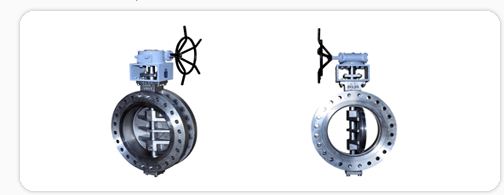
How Does a Ball Valve Work? A Complete Guide for Buyers in Canada
When it comes to managing the flow of liquids and gases, ball valves are among the most dependable solutions. In Canada, ball valves are utilized in a broad variety of plumbing systems, ranging from household plumbing systems to industrial plants, due to its safety, longevity, and cost-effectiveness. If you are considering making a purchase, selecting the appropriate ball valve provider in Canada will ensure that you receive the highest possible quality that meets your requirements. However, what exactly is the operation of a ball valve? To simplify things, let’s break it down.
What is a ball valve?
A ball valve is a mechanical device that is utilized for the purpose of controlling the flow of gases and liquids. A hole is located in the center of the spherical ball, which gives it its shape. Following the alignment of this hole with the pipeline, the flow will continue. When the valve is rotated through 90 degrees, it blocks the passage, which immediately stops the flow of fluid.
Difference Between Ball Valves and Other Valves
When it comes to valves, ball valves require only a quarter turn to work, in contrast to gateway or globe valves. This makes them more reliable, faster, and easier to operate, especially for people who are not specialists in the field.
History of Ball Valves
Development of Flow Control Systems
The operation of industrial valves required a significant amount of time prior to the invention of ball valves. The efficient design of ball valvInitially introduced in the middle of the 20th century, the efficient design of ball valves revolutionized flow control mechanisms.
Ball valves are one of the most adaptable types of valves since they are utilized in a wide variety of applications today, ranging from the faucets in individual homes to the vast oil pipelines that are used all over the world.
What is the operation of a ball valve?
The Scientific Justification for the Mechanism
A perforated ball that is housed within a hollow chamber is the core component of the valve design. By rotating this ball, you can either open or block the flow, which reduces wear and increases the performance life of the ball.
An Explanation of the Quarter-Turn Operation
The operation of ball valves requires only a turn of ninety degrees. Because of their quarter-turn design, they are as easy to use as turning on or off a domestic appliance.
Efficiency of Flow Control and Shutoff Procedures
Because of their tight sealing, which guarantees little leakage, they are the product of choice for companies that deal with pressurized fluids, gases, or materials that contain chemicals
Key Components of a Ball Valve
- The Ball: Usually stainless steel or brass, it regulates flow.
- The Seats: Soft or metal rings that ensure leak-proof operation.
- The Stem and Handle: Connects the handle to the ball for easy rotation.
- The Body: Protects the internal parts and withstands pressure.
Types of Ball Valves
Full Port vs. Standard Port
- Full Port: Maximum flow, minimal resistance.
- Standard Port: Slight restriction, but cost-effective.
- Floating Ball Valves: Offer tighter seals by floating against the downstream seat.
- Trunnion-Mounted Ball Valves: Perfect for high-pressure applications.
- Multi-Port Ball Valves: Direct flow in multiple directions, ideal for complex piping.
How Ball Valves Ensure Leak-Free Operation?
- Seal Technology: PTFE (Teflon) or elastomer seats ensure smooth, leak-free operation.
- Pressure & Temperature Resistance: Designed to withstand extreme Canadian winters and industrial conditions.
Advantages of Ball Valves
- Durability and Long Lifespan
- Low Maintenance Needs
- High Versatility Across Industries
Applications of Ball Valves in Canada
- Residential Plumbing: Reliable flow control in homes.
- Oil, Gas, and Petrochemical Industries: Crucial for Alberta’s energy sector.
- Water Treatment Facilities: Used in municipal purification plants.
- HVAC and Power Plants: Ensure safe and efficient energy systems.
Ball Valve Installation and Maintenance
Step-by-Step Basics
- Cut the pipe and prepare ends.
- Insert the valve in place.
- Tighten fittings or weld joints.
- Test for leaks.
Maintenance Tips
- Check seals regularly.
- Lubricate moving parts when necessary.
- Replace worn seats or gaskets promptly.
Ball Valves vs. Gate Valves
While gate valves are useful for throttling, ball valves are better for quick shutoff and leak-proof performance. For Canadian industries prioritizing efficiency, ball valves are the preferred choice.
Choosing the Right Ball Valve in Canada
Factors to Consider
- Application: residential, industrial, or commercial
- Pressure & temperature requirements
- Flow capacity
- Material: Brass, Stainless Steel, PVC
Brass: Affordable and durable for home plumbing.
Stainless Steel: Corrosion-resistant, great for industrial settings.
PVC: Lightweight and budget-friendly for light applications.
Where to Buy Quality Ball Valves in Canada
If you are looking for ball valves in Canada that are dependable, it is essential to purchase them from a reputable ball valve provider in Canada. There is a large selection of industrial-grade valves available from specialized suppliers and internet merchants. These valves are made of materials such as brass, stainless steel, and PVC. Hardware stores may carry some basic selections. If you purchase from the proper supplier, you can rest assured that you will receive professional help, warranty support, and durability.
Final Thoughts
Although they may appear to be straightforward, ball valves play a significant role in terms of efficiency, safety, and cost savings. Whether you are a homeowner in Toronto or an engineer in Alberta, having a deeper understanding of how they function enables you to make more informed decisions on your purchases.
Are you looking for the most reliable providers of ball valves in Canada? To guarantee long-lasting performance, leak-free operation, and peace of mind for both residential and industrial requirements, it is important to select a reliable source.
